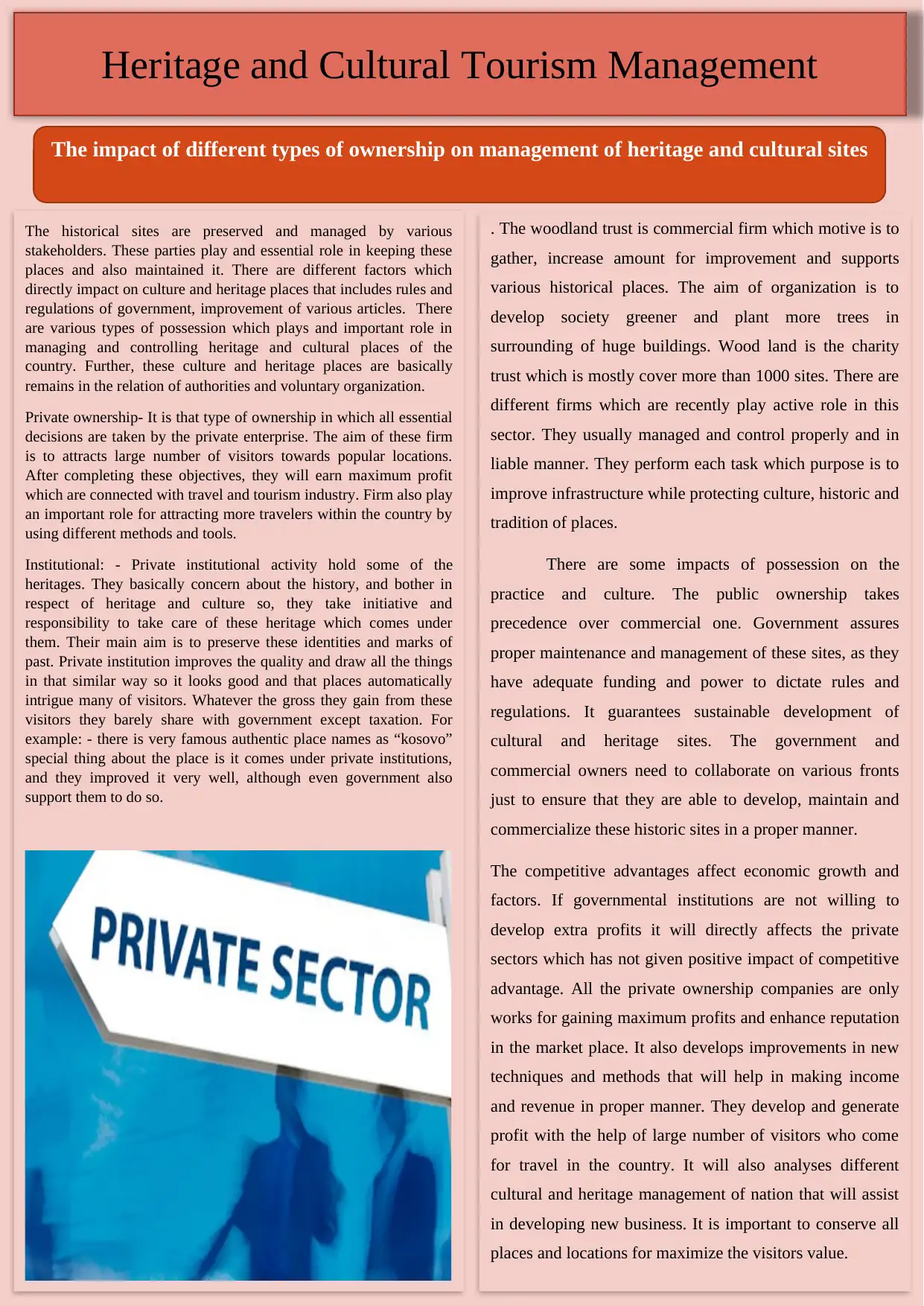Analyzing Ownership and Management of Cultural Heritage Sites
VerifiedAdded on 2020/07/22
|1
|1568
|114
Report
AI Summary
This report examines the diverse landscape of heritage and cultural site management, focusing on the impact of different ownership models. It explores private, institutional, and public ownership structures, analyzing their respective roles, objectives, and impacts on the preservation and commercialization of historical sites. The report highlights the significance of government regulations, institutional initiatives, and commercial entities like the Woodland Trust in managing and maintaining these sites. It also discusses the advantages and disadvantages of each ownership type, considering factors such as funding, visitor experience, and the balance between commercial interests and cultural preservation. The report emphasizes the need for collaboration between government and commercial owners to ensure sustainable development, economic growth, and the conservation of cultural heritage for future generations. Furthermore, it analyzes the impact of ownership on competitive advantages, economic factors, and the development of new business opportunities within the cultural tourism sector.







![[object Object]](/_next/static/media/star-bottom.7253800d.svg)